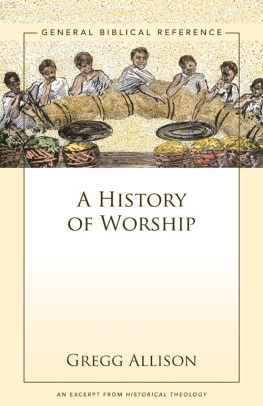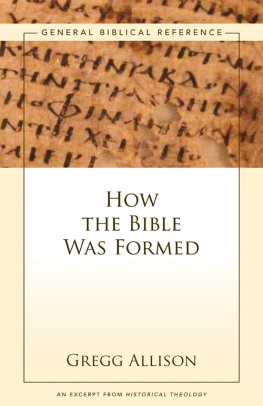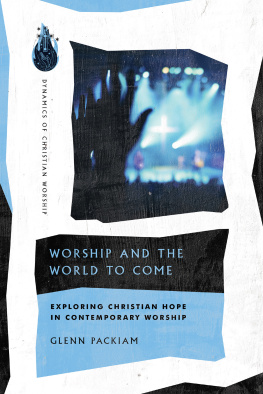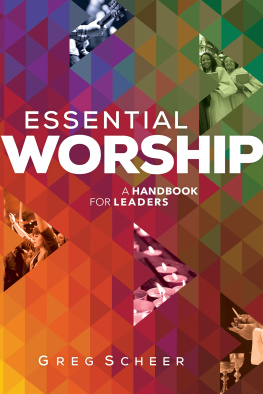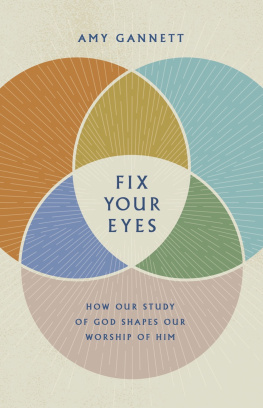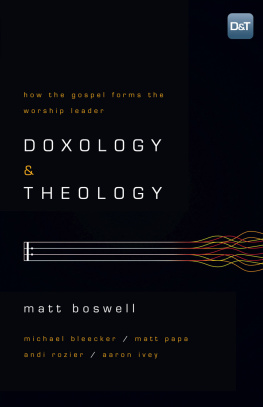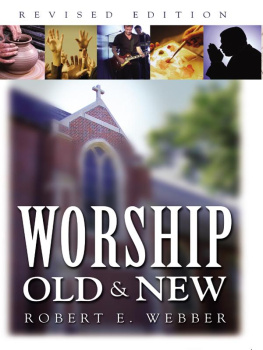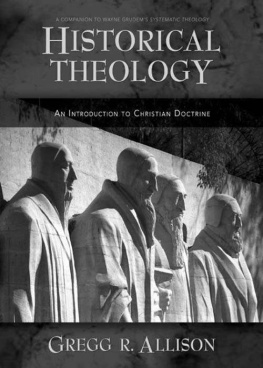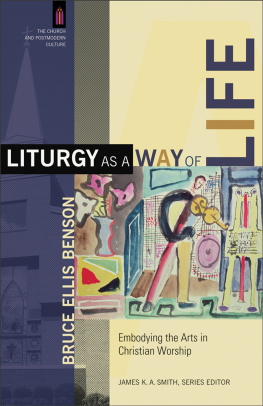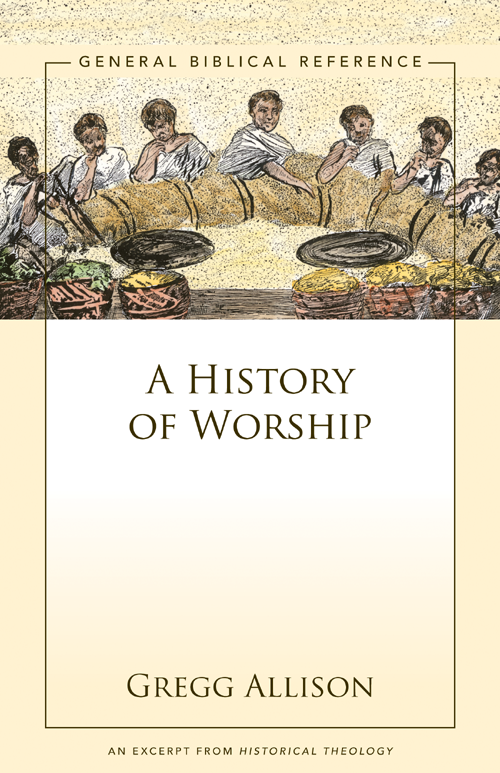How has the church developed its concept and practice of worship?
STATEMENT OF BELIEF
The church has historically gathered together regularly (at least every Sunday, if not more frequently) for the purpose of worship, which may be defined as the activity of glorifying God in his presence with our voices and hearts. Included in these services of worship are activities such as praising and thanking God through song and prayer, reading and preaching the Word of God, celebrating the sacraments, interceding for needs, and giving financially. While these elements seem to be standard activities in most churches, many differences also characterize the churches of Jesus Christ.
One major difference is due to the division between liturgical and nonliturgical churches. According to the former, worship services are to be well ordered and arranged with close attention to historical liturgical practices. Indeed, in some churches the Roman Catholic Church, for example the liturgy varies only slightly from that employed in the church well over a millennium ago. According to the latter churches, though worship services are to be ordered generally, allowance should be made for spontaneity and variety. Such churches often believe that a liturgical approach may hinder the leading of the Holy Spirit and encourage religious formalism rather than heartfelt worship.
Within Protestant churches, another major difference in worship patterns can be traced to the incorporation of different principles for ordering worship. One the one hand, the regulative principle holds that God alone, as revealed through his Word, determines what constitutes worship that is acceptable to him. Thus, unless some liturgical element e.g., biblical hymn singing, reading of Scripture, and preaching has either explicit or implicit warrant from Scripture, it cannot be incorporated into the churchs worship. On the other hand, the normative principle holds that unless Scripture explicitly or implicitly prohibits them, other worship elements may be incorporated and the churchs liturgy is still pleasing to God.
Historically, evangelical churches have exhibited a wide diversity in worship styles in their regular services. Generally speaking, a much more ordered, historically regulated approach to worship characterized evangelical churches prior to the middle of the twentieth century. For various reasons, at that time the growth of evangelical churches began to be accompanied by experimentation with new and creative worship elements and approaches. This chapter traces the development of both the traditional elements of worship and these recent innovations.
WORSHIP IN THE EARLY CHURCH
From the New Testament, we learn of key practices that characterized the meetings of the early churches gathered together to worship God (we have no other practicenor do the churches of God; 1 Cor. 11:16; cf. 14:33). These included reading, preaching, and teaching Scripture (1 Tim. 4:13) so as to admonish one another (Col. 3:16); singing psalms, hymns, and spiritual songs with thanksgiving to God (Col. 3:16); prophesying and praying (1 Cor. 11:316), which included making requests, prayers, intercession and thanksgiving for everyone for kings and all those in authority (1 Tim. 2:12); the exercise of spiritual gifts (1 Cor. 1214), including speaking in tongues and its interpretation and prophecy and its evaluation (1 Cor. 14), carried out for the common good (1 Cor. 12:7); financial giving (1 Cor. 16:2; 2 Cor. 89); the exercise of church discipline (1 Cor. 5; cf. 2 Cor. 2:111); baptism of new converts (Acts 2:3841); and the Lords Supper, which was celebrated in the context of an agape meal or love feast (1 Cor. 10:1422; 11:1734; cf. Jude 12). The expectation was that Christians were to come together regularly (Heb. 10:25) they met at least every Sunday (1 Cor. 16:2), often assembling in homes (Rom. 16:5; 1 Cor. 16:19; Col. 4:15) as the church of Jesus Christ. Indeed, separation from the church was a tragic step, yet also a clear indication of a bogus faith in Jesus (1 John 2:19).
Many of these practices continued to characterize the meetings of the early churches after the apostolic period. One snapshot of early Christian worship was offered by Justin Martyr. This church, consisting of believers from both urban centers and rural areas (he portrays a rather substantial congregation), gathered together on Sunday because it was both the first day of divine creation and the day of Christs resurrection. The service consisted of the reading of (what we now call) the Old Testament and the Gospels. This apparently lengthy reading of Scripture was followed by teaching and admonition by the leader of the church, congregational prayer, the celebration of the Eucharist, or Lords Supper, and financial giving.
Justin Martyrs Description of Early Church Worship
"On the day called Sunday, all who live in cities or in the country gather together in one place, and the memoirs of the apostles or the writings of the prophets are read, as long as time permits. Then, when the reader has ceased, the president verbally instructs, and exhorts to the imitation of these good things. Then we rise together and pray, and when our prayer is ended, bread and wine and water are brought, and the president [presider] in the manner offers prayers and thanksgivings, according to his ability, and the people assent, saying Amen! And there is a distribution [of the Eucharist] to each, and a participation of that over which thanks have been given, and to those who are absent a portion is sent by the deacons. And they who are well to do, and willing, give what each thinks fit; and what is collected is deposited with the president, who gives aid to the orphans and widows, and those who, through sickness or any other cause, are in want, and those who are in bonds [prison], and the strangers sojourning among us, and in a word takes care of all who are in need. But Sunday is the day on which we all hold our common assembly, because it is the first day on which God, having wrought a change in the darkness and matter, made the world; and Jesus Christ our Savior on the same day rose from the dead."
As the church in its early centuries developed, its service of worship was increasingly formalized into a standard, universal liturgy that included the reading of Scripture (the Old Testament, the Gospels, and other portions of the New Testament), singing of the Psalms, preaching, praying, kissing one another (restricted according to gender), and celebrating the Eucharist. Following a set liturgy for the worship service became common practice in the churches.
An Early Standardized Liturgy
In the middle [of the church], let the reader stand upon some high place and let him read the books [of the Old Testament]. When there have been two different lessons read, let some other person sing the hymns of David [the Psalms], and let the people join at the conclusion of the verses. Afterwards, let our Acts be read, and the letters of Paul and afterwards let a deacon or presbyter read
With the increasing importance of the Church of Rome and Latin as the language of the Roman Empire, a specific Roman liturgy was developed in Latin. This liturgy is often referred to as the Roman Mass (or missal). Mass became the standard word for the Eucharist by the middle of the fifth century, developing from the statement at the end of the liturgyIte missa estwhich dismissed the church. The Roman Mass was highly structured and featured the celebration of the Eucharist. It became a liturgical template for the churchs worship services beginning with the fifth century.

